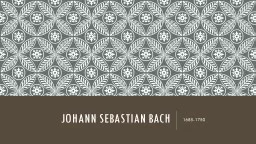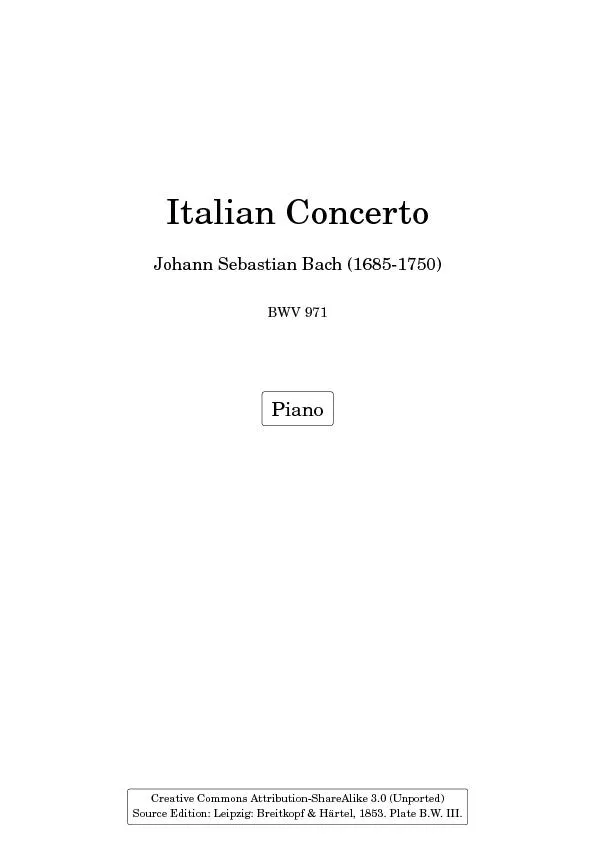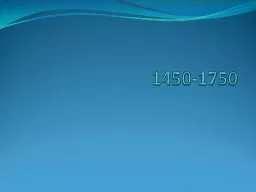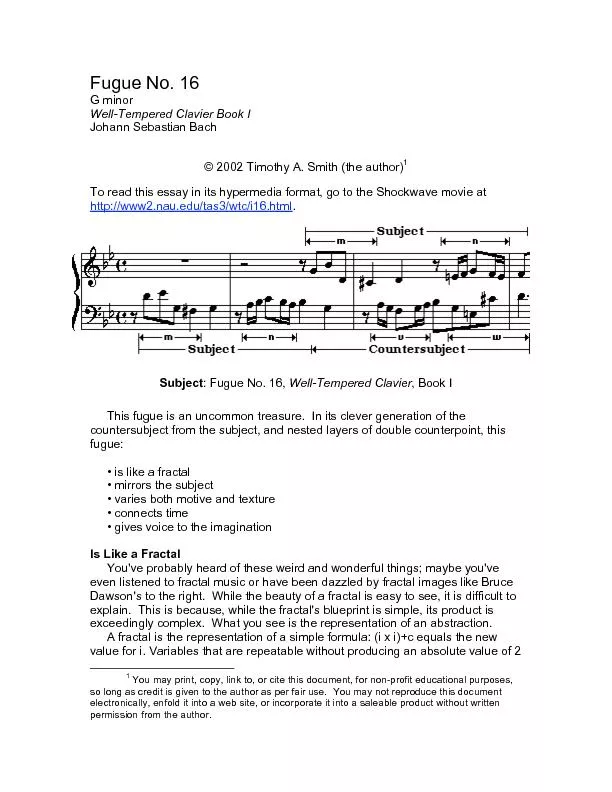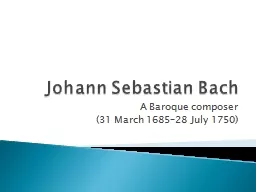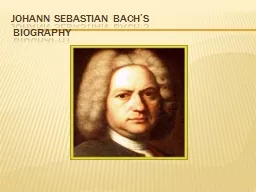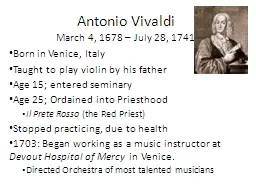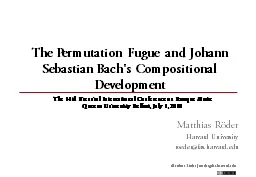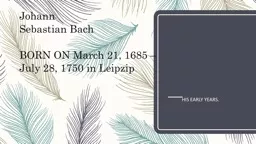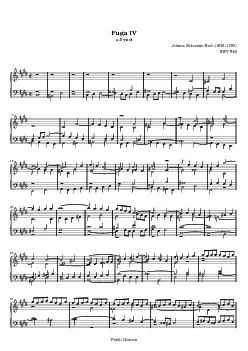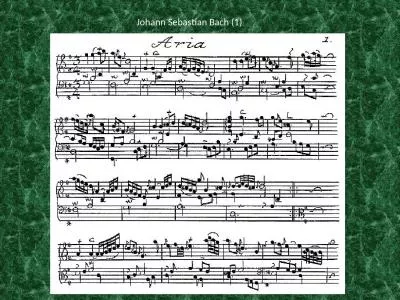PPT-Johann Sebastian Bach 1685-1750
Author : faustina-dinatale | Published Date : 2019-02-07
Bach Greatest Composer of all time German Composer of the Baroque period Many people consider Bachs birth and death dates as the beginning and end of the Baroque
Presentation Embed Code
Download Presentation
Download Presentation The PPT/PDF document "Johann Sebastian Bach 1685-1750" is the property of its rightful owner. Permission is granted to download and print the materials on this website for personal, non-commercial use only, and to display it on your personal computer provided you do not modify the materials and that you retain all copyright notices contained in the materials. By downloading content from our website, you accept the terms of this agreement.
Johann Sebastian Bach 1685-1750: Transcript
Download Rules Of Document
"Johann Sebastian Bach 1685-1750"The content belongs to its owner. You may download and print it for personal use, without modification, and keep all copyright notices. By downloading, you agree to these terms.
Related Documents

